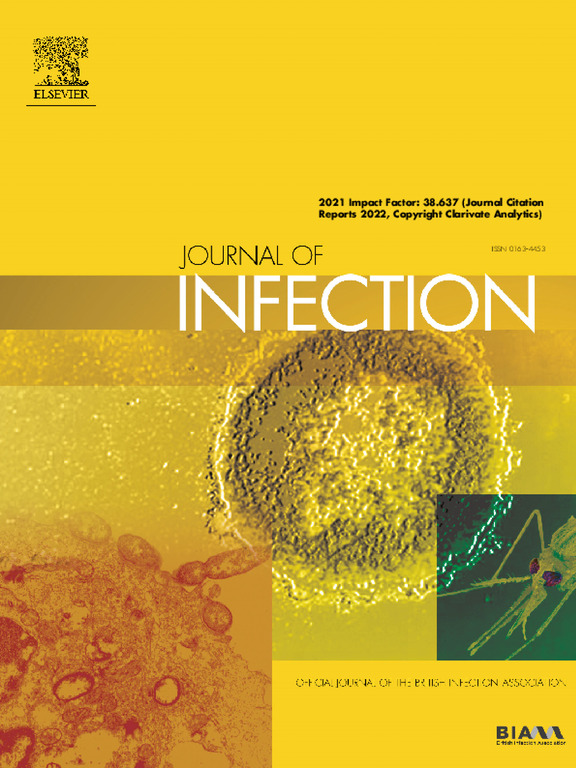单纯疱疹病毒性脑炎后自身免疫性脑炎的临床表型和结局:一项系统回顾和荟萃分析
IF 11.9
1区 医学
Q1 INFECTIOUS DISEASES
引用次数: 0
摘要
背景:单纯疱疹病毒脑炎后自身免疫性脑炎(HSVE-AE)是中枢神经系统感染与自身免疫的交叉。明确HSVE-AE的表型和免疫治疗的安全性和有效性将有助于确定免疫治疗候选人,优化治疗策略,改善患者预后。方法:我们系统地检索Embase、Medline、PubMed和Web of Science(2007-2024)中确认HSVE后发生AE符合共识标准的病例。提取人口统计学、表型、治疗和结局数据。采用降维、网络分析和多变量逻辑回归来探索年龄和诊断特异性模式和结果预测因子。结果:从筛选的2259篇文章中,纳入78项研究(225例患者)(中位年龄7.25岁;52.9%的女性)。儿童(0-12岁)在HSVE期间癫痫发作较多(p=0.003), AE期间运动障碍较多(12岁),HSVE期间头痛较多(p=0.003), AE期间语言功能障碍(p=0.02)和神经精神症状(p=0.02)较多。HSVE-AE (89.3% n -甲基- d -天冬氨酸受体抗体脑炎[nmda - abe])在临床、临床旁和结局领域与典型nmda - abe队列(n=1550)存在显著差异。不良结局与婴儿和老年人年龄、神经精神症状和ae期mRS bb4有关。利妥昔单抗独立预测更好的结果。结论和相关性:该荟萃分析定义了新的年龄特异性HSVE-AE特征、结果预测因子,并证实了免疫治疗后HSVE-AE的安全性和改善的结果。本文章由计算机程序翻译,如有差异,请以英文原文为准。
Clinical phenotype and outcomes in autoimmune encephalitis after herpes simplex virus encephalitis: A systematic review and meta-analysis
Background
Autoimmune encephalitis after herpes simplex virus encephalitis (HSVE-AE) represents the intersection of central nervous system infection and autoimmunity. Defining the phenotype and the safety and effectiveness of immunotherapy in HSVE-AE would help identify immunotherapy candidates, optimise therapeutic strategies, and improve patient outcomes.
Methods
We systematically searched Embase, Medline, PubMed, and Web of Science (2007–2024) for cases meeting consensus criteria for AE after confirmed HSVE. Demographics, phenotype, treatment and outcome data were extracted. Dimensionality reduction, network analysis, and multivariate logistic regression was used to explore age- and diagnosis-specific patterns and outcome predictors.
Results
From 2259 articles screened, 78 studies (225 patients) were included (median age 7.25 years; 52.9% female). Children (0–12 years) experienced more seizures during HSVE (p=0.003) and movement disorders during AE (p<0.001). Older patients (>12 years) had more headaches during HSVE (p=0.003), and speech dysfunction (p=0.02) and neuropsychiatric symptoms (p=0.02) during AE. HSVE-AE (89.3% N-methyl-D-aspartate receptor-antibody encephalitis [NMDAR-AbE]) differed significantly from a canonical NMDAR-AbE cohort (n=1550) in clinical, paraclinical and outcome domains.
Poor outcomes were linked to infant and older adult age, neuropsychiatric symptoms, and AE-phase mRS >4. Rituximab independently predicted better outcomes. Disability improved over time (p<0.001), with adverse event rates comparable to NMDAR-AbE.
Conclusions and relevance
This meta-analysis defines novel age-specific HSVE-AE features, outcome predictors, and confirms the safety and improved outcomes of HSVE-AE after immunotherapy.
求助全文
通过发布文献求助,成功后即可免费获取论文全文。
去求助
来源期刊

Journal of Infection
医学-传染病学
CiteScore
45.90
自引率
3.20%
发文量
475
审稿时长
16 days
期刊介绍:
The Journal of Infection publishes original papers on all aspects of infection - clinical, microbiological and epidemiological. The Journal seeks to bring together knowledge from all specialties involved in infection research and clinical practice, and present the best work in the ever-changing field of infection.
Each issue brings you Editorials that describe current or controversial topics of interest, high quality Reviews to keep you in touch with the latest developments in specific fields of interest, an Epidemiology section reporting studies in the hospital and the general community, and a lively correspondence section.
 求助内容:
求助内容: 应助结果提醒方式:
应助结果提醒方式:


